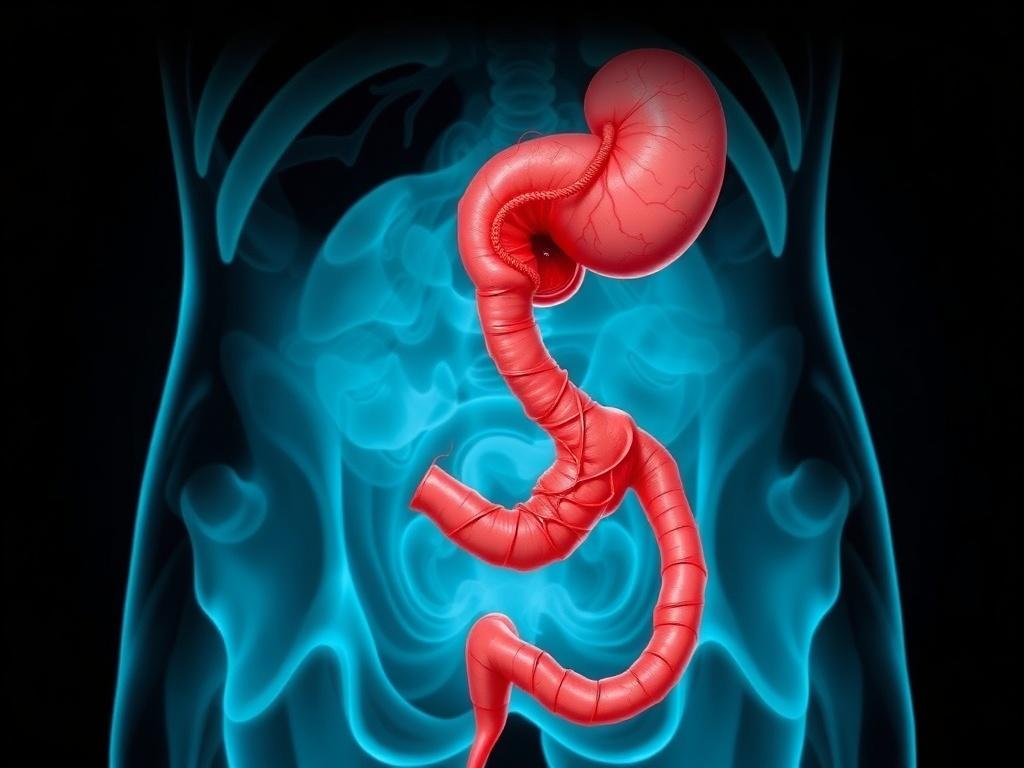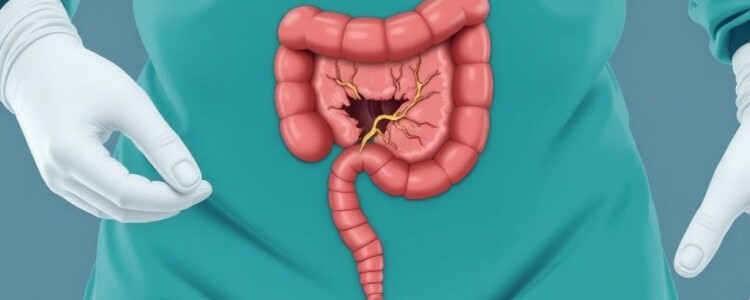What is Gangrenous Appendicitis?
Gangrenous appendicitis is a severe form of appendicitis that occurs when the appendix, a small tube connected to the large intestine, becomes inflamed and swollen to the point where its tissue starts to die or necrotize. This condition is a progression of untreated or advanced acute appendicitis and poses significant health risks due to the potential for the appendix to rupture, leading to life-threatening infections. Understanding the causes, symptoms, and treatment options of gangrenous appendicitis is crucial for timely intervention and recovery.
The Anatomy and Function of the Appendix
The appendix is a narrow, finger-like pouch attached to the cecum, located in the lower right abdomen. Although its exact function remains somewhat of a mystery, some researchers believe it may play a role in immune system function and gut flora maintenance. Despite this, the appendix is often considered a vestigial organ, which means that its removal generally does not cause significant health issues. Appendicitis occurs when the appendix becomes blocked, causing inflammation and swelling.
How Does Gangrenous Appendicitis Develop?

Gangrenous appendicitis develops from untreated or severe acute appendicitis. When the blockage of the appendix, usually caused by fecal matter, lymphoid hyperplasia, or a foreign body, prevents typical drainage, bacteria multiply rapidly inside the organ. This leads to increased pressure, swelling, and reduced blood flow to the appendiceal tissue. The lack of blood supply causes tissues to die, resulting in gangrene. This stage is characterized by extensive tissue damage and increased risk of perforation, which can lead to peritonitis, an infection of the abdominal cavity.
Common Causes and Risk Factors
While anyone can develop gangrenous appendicitis, certain factors increase the risk of the condition progressing to this severe stage:
- Delayed treatment: Waiting too long to seek medical help can result in worsening inflammation and gangrene.
- Blockage of the appendix: Obstruction by fecaliths (hardened stool), parasites, or swollen lymphoids can initiate appendicitis.
- Age: Children and elderly individuals are at higher risk due to weaker immune responses.
- Infections: Bacterial infections in the gastrointestinal tract can sometimes precipitate appendicitis.
- Immune system disorders: Compromised immunity may exacerbate infection severity.
Key Keyword Phrases
Throughout this article, keep in mind terms such as gangrenous appendicitis, symptoms of gangrenous appendicitis, causes of gangrenous appendicitis, treatment for gangrenous appendicitis, and gangrenous appendicitis complications. These phrases will help us focus on the important aspects of the topic.
Recognizing the Symptoms of Gangrenous Appendicitis
Identifying symptoms early is essential because gangrenous appendicitis can quickly lead to serious complications. The symptoms usually begin like typical appendicitis but progress rapidly. Here are some characteristics to watch for:
| Symptom | Description | Why It Matters |
|---|---|---|
| Severe abdominal pain | Starts near the navel and shifts to the lower right abdomen, worsening over time. | Indicative of appendix inflammation progressing to gangrene. |
| High fever | Temperature rises as infection spreads. | Shows systemic infection; needs immediate attention. |
| Nausea and vomiting | Common digestive symptoms accompanying pain. | Can contribute to dehydration and signal progression. |
| Loss of appetite | Due to overall illness and abdominal discomfort. | Often an early sign of worsening condition. |
| Abdominal swelling and tenderness | Swelling often signals localized infection and gangrene. | Helps differentiate gangrenous appendicitis from milder forms. |
It’s important to note that symptoms of gangrenous appendicitis can mimic other conditions such as gastroenteritis, ovarian cysts, or urinary tract infections, making professional medical evaluation crucial when these signs appear.
Diagnostic Methods for Gangrenous Appendicitis
Diagnosing gangrenous appendicitis requires a combination of clinical examination, laboratory tests, and imaging studies. These methods help to confirm the severity of the appendicitis and determine the best course of treatment:
- Physical examination: Doctors often check for tenderness in the lower right abdomen, rebound pain, and guarding.
- Blood tests: Elevated white blood cell count and inflammatory markers such as C-reactive protein indicate infection.
- Urinalysis: Used to rule out urinary tract infections that may mimic appendicitis symptoms.
- Imaging: Ultrasound or CT scans are highly effective at visualizing an inflamed or perforated appendix, identifying gangrene or abscess formation.
CT scans are particularly useful because they provide detailed images that can distinguish between uncomplicated appendicitis and gangrenous or perforated appendicitis, guiding surgeons in their treatment approach.
Treatment Options for Gangrenous Appendicitis
Unlike mild appendicitis cases that can sometimes be managed conservatively, gangrenous appendicitis almost always requires prompt surgical intervention to prevent complications like rupture or widespread infection. Here’s a detailed overview of treatment strategies:
| Treatment | Description | When Used |
|---|---|---|
| Appendectomy (Surgical removal) | The primary and most effective treatment, usually performed laparoscopically or open surgery. | Indicated immediately after diagnosis to remove the dead appendix. |
| Antibiotic therapy | Given before and after surgery to control infection and prevent sepsis. | Used adjunctively or sometimes initially in select cases when surgery is delayed. |
| Supportive care | IV fluids, pain management, and monitoring for complications. | Provides overall support during hospital stay and recovery. |
In cases where gangrenous appendicitis has caused an abscess, drainage may be required before surgery to stabilize the patient. However, delaying appendectomy too long in these cases can be hazardous, so decisions are personalized based on patient condition.
Potential Complications of Gangrenous Appendicitis
Gangrenous appendicitis is a dangerous condition because it indicates that the appendix tissue is dying and may soon rupture if not already perforated. This leads to multiple complications which can be life-threatening if untreated:
- Perforation: A burst appendix releases bacteria into the abdominal cavity causing peritonitis.
- Peritonitis: Infection of the lining of the abdomen, often requiring emergency surgery and antibiotics.
- Abscess formation: Localized pockets of infection that may need drainage.
- Sepsis: A systemic inflammatory response to infection that can lead to organ failure.
- Intestinal obstruction: Swelling and adhesions may block the intestines.
Recognizing gangrenous appendicitis early and seeking prompt medical care is crucial to preventing these serious complications, which often require intensive treatment and longer recovery times.
Recovery and Prognosis After Treatment
Following surgery for gangrenous appendicitis, hospitalization typically lasts several days for IV antibiotics, monitoring, and supportive care. Patients may experience fatigue, mild pain, and limited mobility initially but most recover fully with appropriate care. It is important to follow post-operative instructions including wound care, activity restrictions, and follow-up visits to avoid infection or complications.
| Recovery Aspect | Expected Outcome |
|---|---|
| Hospital stay | 3-7 days, depending on severity and complications. |
| Return to daily activities | Usually within 2-4 weeks. |
| Laparoscopic surgery benefits | Reduced pain, quicker recovery, smaller scars. |
| Potential complications | Infection at incision site, bowel obstruction, or abscess formation—rare with proper care. |
Long-term prognosis is excellent when gangrenous appendicitis is treated promptly with surgery and antibiotics. However, delayed treatment can increase risks significantly.
Preventing Gangrenous Appendicitis
While appendicitis itself cannot always be prevented, understanding the early symptoms and seeking medical evaluation quickly can significantly reduce the chance of appendicitis progressing to the gangrenous stage. Some health tips include:
- Be aware of sudden or worsening abdominal pain and fever.
- Maintain adequate hydration and a fiber-rich diet to promote healthy bowel movements.
- Don’t ignore symptoms like nausea, loss of appetite, or abdominal tenderness.
- Seek immediate medical care for persistent or severe abdominal pain.
Though there is no guaranteed way to prevent appendicitis, early recognition and prompt medical intervention remain the best strategies against gangrenous appendicitis.
Conclusion
Gangrenous appendicitis represents a serious and potentially life-threatening progression of an inflamed appendix. It results from untreated or delayed cases of acute appendicitis where tissue death occurs due to blood supply loss. Recognizing the symptoms such as severe abdominal pain, high fever, and abdominal tenderness is essential for timely diagnosis. Effective treatment almost always involves surgical removal of the appendix combined with antibiotics and supportive care. Understanding the causes, risks, and treatment options for gangrenous appendicitis empowers patients to seek prompt care and avoid serious complications such as rupture, peritonitis, and sepsis. Recovery after surgery is generally good, especially with early intervention. Awareness and immediate response to symptoms remain the best tools to prevent gangrenous appendicitis and ensure a full recovery.



